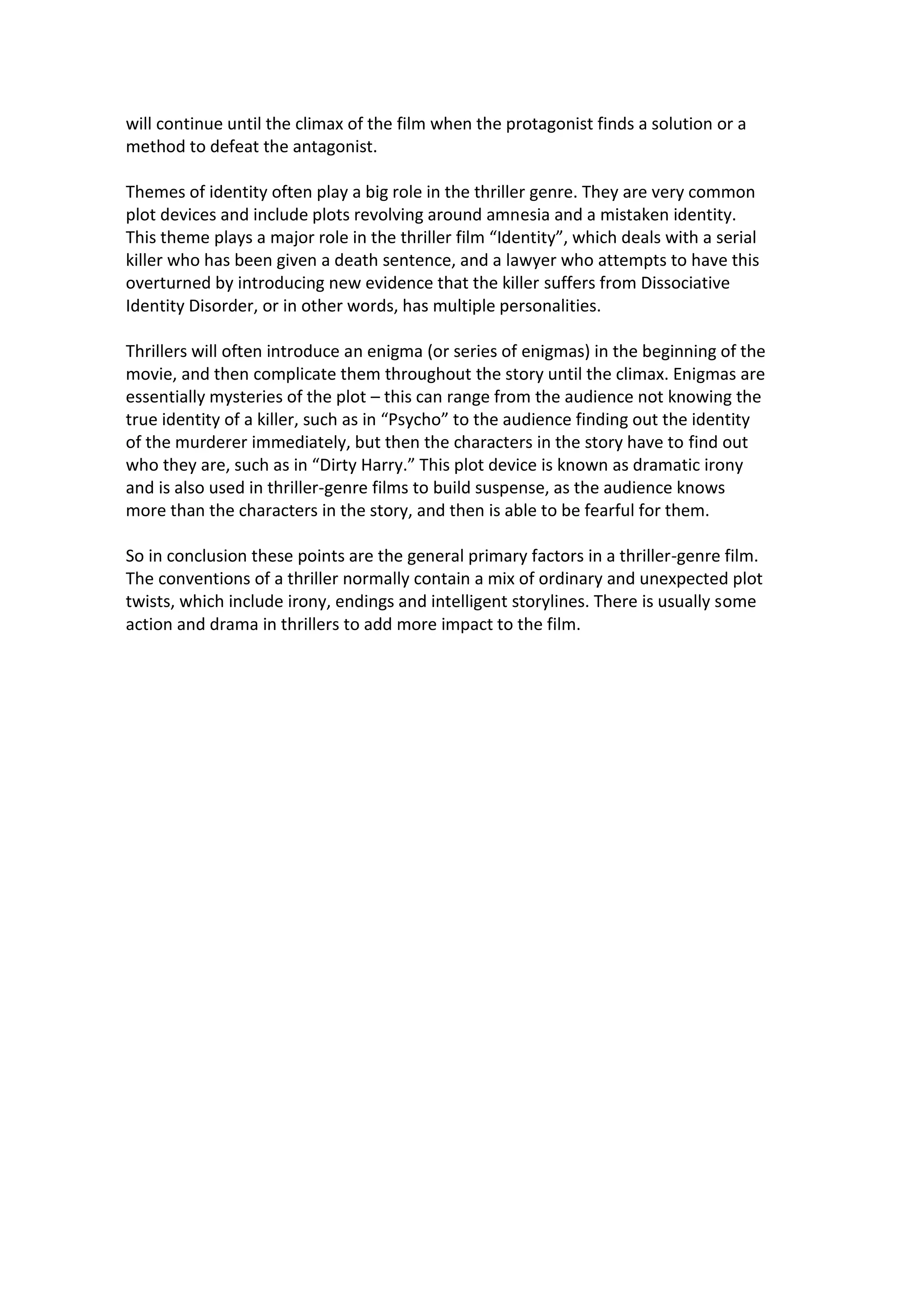Thriller films follow certain conventions to build suspense in the audience. They often center around crimes like a serial killer on the loose. Multiple storylines combine to confuse and intrigue viewers as they try to follow the plot. Flashbacks and documentary styles are also used effectively. The protagonist typically has a weakness that the antagonist exploits to put them in danger. This drives up suspense until the climax where the protagonist defeats the antagonist. Themes of identity and mystery through dramatic irony keep audiences engaged as they try to solve enigmas hinted at throughout.

